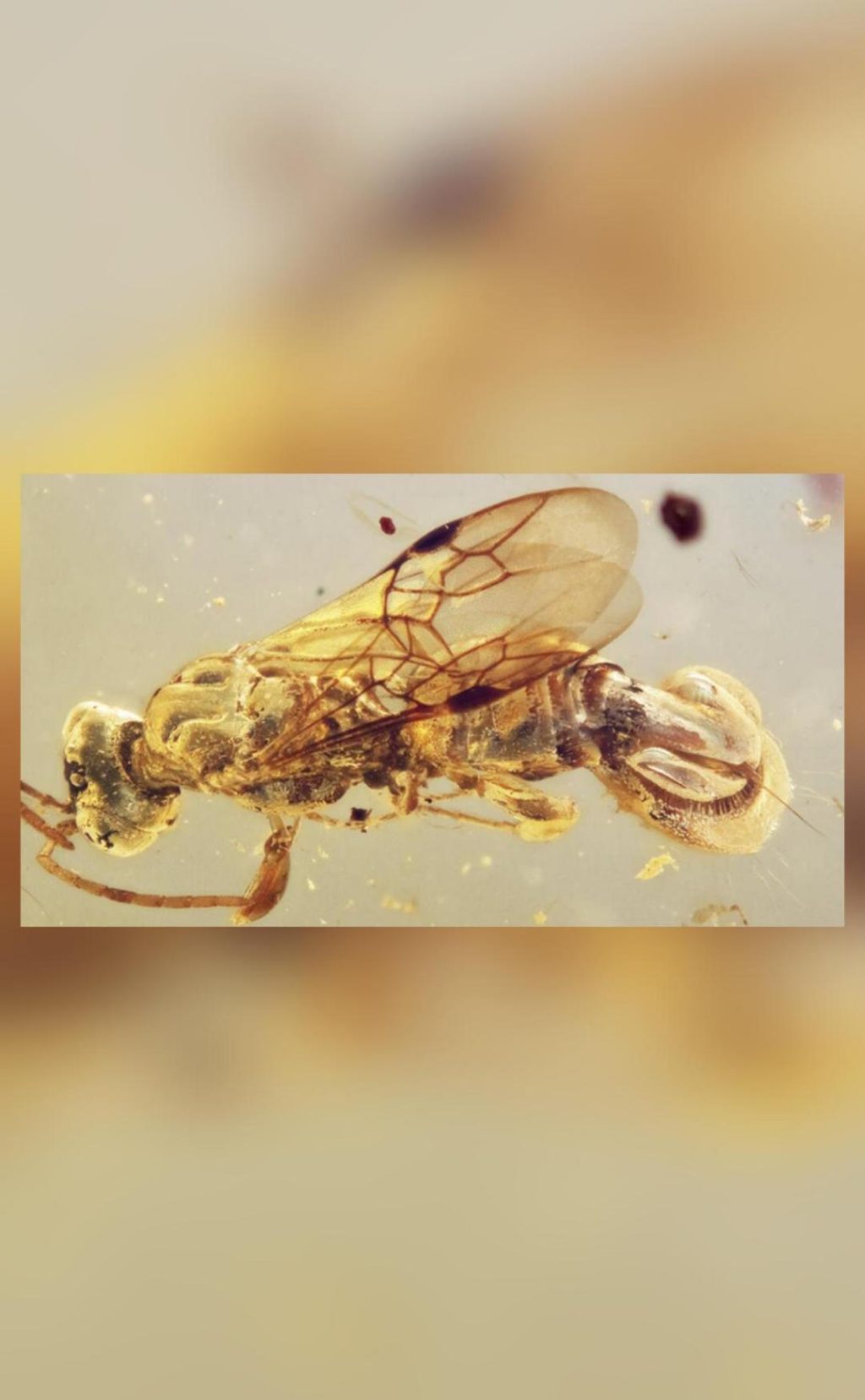
Parasitic Wasps, Dating Back 99 Mn Yrs, Found Preserved in Amber in Myanmar
In a fascinating discovery, scientists have unearthed an extinct species of parasitic wasp that dates back nearly 99 million years. The remarkable find was published in the journal BMC Biology, and it has left researchers thrilled and intrigued. The wasp, named Sirenobethylus charybdis, was discovered preserved in amber in Myanmar, a country known for its rich amber deposits. This remarkable discovery not only sheds light on the evolution of parasitic wasps but also provides a unique glimpse into the ancient ecosystem of what is now Myanmar.
The study’s lead author, Dr. Huang Diying, from the Chinese Academy of Sciences, and his team, were thrilled to discover the well-preserved specimens of Sirenobethylus charybdis. The wasps measured around 1.5 millimeters in length, with a distinctive feature – bristly, paddle-shaped flaps on the bottom of their abdomen. This unusual structure resembles a Venus flytrap, a carnivorous plant that captures insects for nutrition.
So, how did these wasps use this peculiar feature? Researchers believe that the wasps used these flaps to inject their eggs into the bodies of living hosts, where the larvae would later develop as parasites. This parasitic lifestyle allowed the wasps to feed on the internal organs of their hosts, a unique adaptation that has not been seen in modern wasps.
The discovery of Sirenobethylus charybdis provides a fascinating insight into the evolution of parasitic wasps. The finding suggests that these wasps may have evolved their parasitic lifestyle much earlier than previously thought, around 99 million years ago, during the Cretaceous period. This period saw the rise and fall of many iconic species, including the dinosaurs.
The preservation of the wasps in amber is a testament to the exceptional conditions in which they were buried. Amber is a natural resin that flows from the bark of certain trees, and it can trap and preserve small organisms, like insects, for millions of years. The discovery of the wasps in amber provides a unique opportunity for scientists to study the ancient ecosystem and the evolution of these fascinating insects.
The study of Sirenobethylus charybdis also highlights the importance of Myanmar as a fossil site. The country’s rich amber deposits have yielded many significant discoveries in the field of paleontology, including the infamous “Burmite” amber, which contains ancient insects, spiders, and even fragments of dinosaur bones.
The discovery of Sirenobethylus charybdis is not only a significant scientific find but also a reminder of the vast and mysterious world of ancient insects. These tiny creatures played a crucial role in shaping the ecosystems of the past, and their study can provide valuable insights into the evolution of life on Earth.
As scientists continue to study the ancient world, they may uncover more secrets about the evolution of parasitic wasps and the ecosystems that they inhabited. The discovery of Sirenobethylus charybdis is a remarkable reminder of the importance of preserving our natural world and the wonders that it holds.





